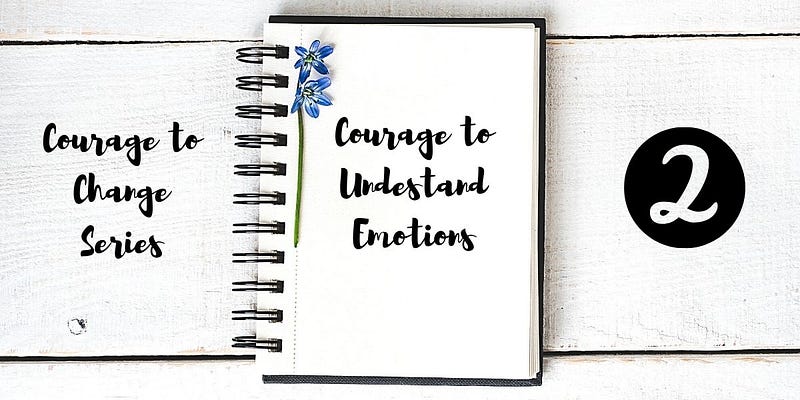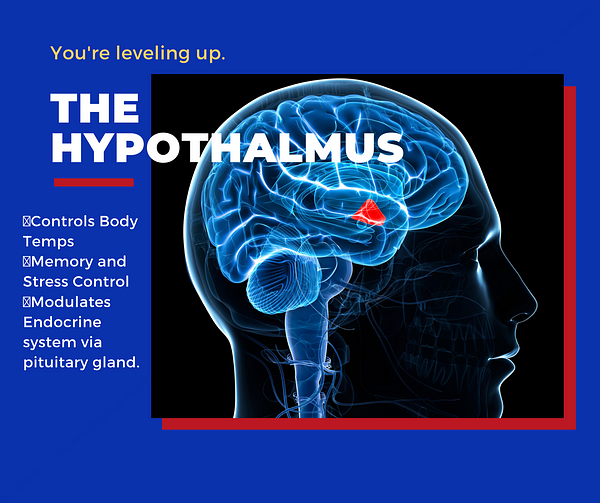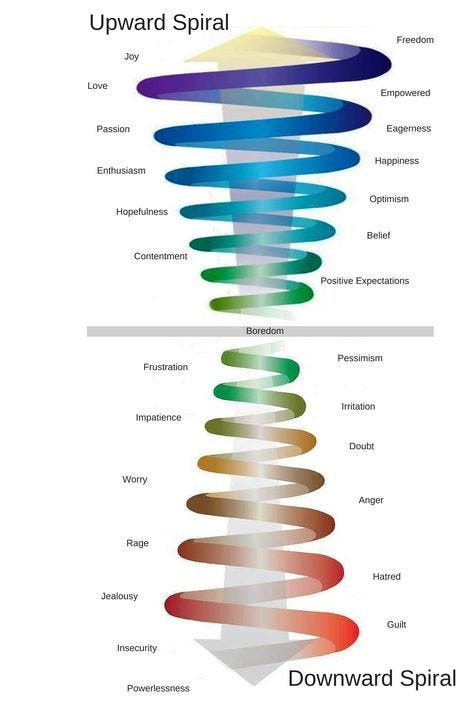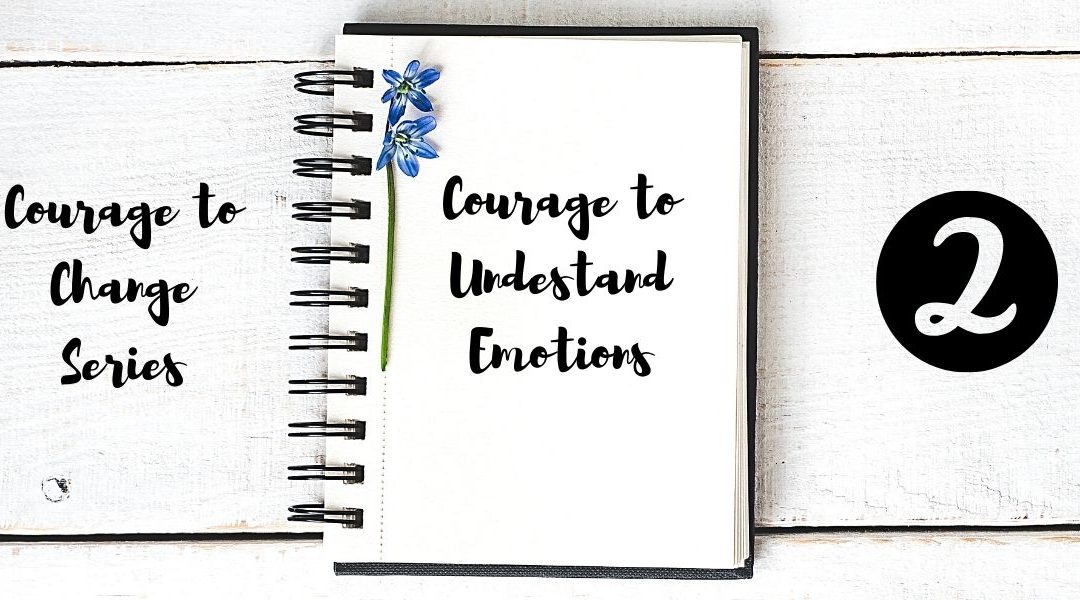Courage to Understand Your Emotions
How science and new tools can free you from being run by your emotions.
This is #Lesson 2 in a series of lessons that invite you to explore when and where it’s time for growth in your life. The series will offer lessons on the most common topics people ask me about in my work as a coach and provide insight and actions to implement with each lesson.

In reality, even though I was not allowing myself to feel, I still was making decisions based on the energy of those emotions. Today, I understand and respect emotions for the beautiful gift that they are. They are not here to consume, control, or be the reason we make or don’t make a decision. They are here as messengers, indicators, and outlets.
Losing a loved one without experiencing sadness, tears, and grief would not honor the loss and the bonds that were shared in life. Just as not celebrating the birth of a new baby with joy, excitement and hope would not do honor and justice to the new life.
So, in this conversation, we are going to discuss emotions from several different perspectives. First, we are going to learn what happens in your body when you feel an emotion. Second, we are going to look at what happens when we have stored old emotions and not fully felt them. Last we are going to look at the practice of being fully present with emotions in everyday life.
A word on cultural conditioning before we begin…..
Our western society is making progress on the practical awareness of emotions. However, we are still falling dreadfully short in the practice of allowing them and not judging others and ourselves.
My family recently mourned the transition of my father. It was interesting to me that even in an “emotionally aware” family some strong feelings of shame emerged over the grieving process.
Statements like “stop crying — you are sooo sensitive!” leave a lasting impression. Not to mention if you have ever been shamed for showing emotion in the workplace — heaven forbid we actually show our humanness!
Even though emotional awareness IS growing there is still a huge amount of resistance and a lack of understanding about how to be with someone who is experiencing emotion. Too often we take it personally when it has nothing to do with us or we jump to trying to fix something that is none of our business to fix.
The greatest gift you can give is to “hold space” for someone experiencing their emotions. To “hold space” simply means that you are present with yourself or someone else without judging whatever way the emotion is being expressed at the moment. (It’s ok to guide someone expressing anger physically to punch a pillow, break an egg, or smash an old dish.) You are not taking the emotions personally or trying to change what’s happening or call it bad or good. You are there for as long as they need you to be.
Although emotions can seem all-consuming, they really are more like waves. They rise in intensity and then eventually subside. Allowing yourself to ride this wave up and back down means you are allowing the full cycle of the emotion.
Problems come when one doesn’t allow the wave at all or cuts it off mid-cycle. Then it gets stuck inside of us as an unfelt emotional pattern. We will be discussing this in more detail in the section called “What Happens to Old Emotions that are not Fully Felt.”
But first, let’s take a look at what physically happens in your body when you feel emotions and why one can truly be addicted to a particular emotion.
What happens in the body when we feel an emotion
Understanding the science of what happens in the body and how it impacts thought and emotion has been life-changing for me. It helps to explain those moments when you really desire to be nicer to your crabby neighbor and fail anyway! By understanding how amazing our physical body is we can partner WITH it to create change instead of giving up on what is not understood.

Dr. Joe Dispenza’s work describes the hypothalamus’s role related to emotions. It is considered a mini-factory that creates unique chemicals to match each emotion. So when a human being feels jealousy an equivalent chemical that matches that emotional state is produced.
The moment a chemical — called a peptide in scientific terms — is manufactured; the hypothalamus distributes it through the pituitary gland and into the bloodstream. Through the bloodstream, it is distributed throughout the body to every cell.
Every single cell in the body has peptide docking stations and when the chemical/peptide docks it locks onto cells like a lock and key sending signals directly into the cell. It’s why before a person even consciously realizes a feeling of jealousy her palms may be sweating and a sick feeling in the stomach is already present.
When a cell consistently experiences the same peptides docking, it develops more receptor sites for those particular peptides and does away with the ones that are less frequently used.
You may have heard the term “addicted to sadness” and this literally happens when over time a person’s cells have adapted to more easily “feel” the sadness chemicals. The great news is that our body quickly adapts and regenerates. It’s why practices such as gratitude are so important. Pausing regularly to focus on what you are grateful and happy about is one way to begin training your brain and body to more dominantly feel happiness by generating the equivalent peptides!
It’s also why understanding our body is so KEY to creating change! Now that you know what is happening scientifically it becomes easier to see why consciously being aware of emotions is key to inviting in more joy and happiness in your life.
If you would like to explore this science more check out the work of Dr. Joe Dispenza and Dr. Candace Pert.
What happens to old emotions that are not fully felt
Now we are going to shift from the physical science of emotions to the energy of emotions. Emotions have been described as energy in motion. Let’s think for a moment — do you have a preferred color for the car you drive? Is there any color of car that you refuse to drive?
I met a lady once who absolutely refused to drive a red car. I got curious and asked why only to discover that her ex-husband that she was still very angry with drove only red cars.
Her refusal to drive a red car didn’t really have anything to do with the color red. It had everything to do with the energy of the emotion of anger she was holding on to. Two of my favorite teachers each describe what’s going on here in different terms. We will take a look from both viewpoints.
The Pain Body
Eckhart Tolle says this about emotions “Any negative emotion that is not fully faced and seen for what it is in the moment it arises does not completely dissolve. It leaves behind a remnant of pain.” The pain-body can then be described as an energy form that lives inside most human beings that is comprised of unprocessed emotions. These emotions come from our own lives, the lives of our ancestors, and the cultural conditioning of the world in general.
My grandparents survived the hard times of the depression. My Grandpa always carefully cut the wrapping paper off of any gift and my Grandmother dutifully saved every bread bag and twist-tie. There are moments today when I am ripping a gift open or disposing of a bread bag that I have a prick of guilt around this. I am the second generation removed and yet some lingering energy from their fear of lack during this time is alive in me.
That’s a small example. On a larger scale imagine a person who was raised by an alcoholic parent who was never completely present for them. She grew up witnessing arguments and maybe even violence. No one taught her how to deal with emotions — in fact, they were not safe to even show.
Today that woman is a grown adult with the energy of all of those unprocessed emotions alive within her. It’s why she prefers to remain single because as soon as a date does something that activates this unprocessed pain — even if what the suitor did was harmless — the pain body takes over and runs the show. She ends the date; blocks him from contacting her and goes on telling a sad story about how she will never find a suitable partner. That is the pain-body in action.
In the lessons ahead we will look at ways to begin dissolving this pain but if you are eager to learn now I highly recommend any video or book written by Eckhart Tolle for additional learning.
Samskaras
Michael Singer is the other source that I have learned so much about undissolved emotions from. In his book, The Untethered Soul, he describes emotions as samskaras, or for better visualization, we will call it an arrow of energy.
Let’s take that same red car example. The story goes deeper. The woman hates the red car because she saw her ex-husband and another woman driving in the red car. When the original event happened her heart was hit with a huge arrow of emotion. Anger, fear, jealousy all wound together. That arrow lodged deep inside of her. The same day she also saw blue and green cars but those impressions processed right through her because she did not assign them any emotional meaning.
But now she has to protect herself from feeling the energy of the red-car arrow lodged deep in her heart. So she drives a crazy path to work every day to avoid the small chance of seeing her ex and his red car. She went on a date the other day — but the suitor pulled up in a red vehicle and without realizing it she unconsciously assigned the guilt of her husband to him because of his red car. There is no second date. This reinforces her story she tells herself that every man is “just like her ex.”
All along it was her elaborate defense mechanism to keep anything from touching that deep wound in her heart. She can change and heal when she recognizes this. She realizes that resolving the past releases the arrow lodged in her heart. Then healing happens. One day she may even end up dating a man who drives a red car and laughing about how silly she used to be.
Whether you being to view undissolved emotions as the pain body or a samskara you can begin to heal. Evolution happens when you find the balance between feel emotion and let it pass through like a wave instead of getting stuck in it.
Balance
Getting stuck in a negative emotion can be dangerous and unhealthy. Being present with emotions and allowing them to be your guide brings peace, joy, and happiness. Getting stuck in negative emotions leads to depression, violence, and even suicide.

The emotional guidance scale helps us identify the emotion being experienced. Then understand how it is moving us closer to or further away from our ultimate goals of joy, happiness, and freedom.
When our red-car hating friend got divorced she had a choice. Be present with and process all of her anger and sadness or stay stuck in it. Facing her feeling would have allowed her to move through the stages of emotion from hate to anger to irritation and then someday on to optimism about her new life. Depending on the strength of these emotions she may have needed a professional to guide her through this process.
Instead, she kept the emotions locked deep down inside. She pretended to be O.K. and put on a strained smile and went about her life. She felt sad, easily drained, and like she was carrying a heavy backpack on her shoulders all the time. Time marched on and she remained stuck in an emotion that she now doesn’t even recognize the source of….until the date in the red car pulls up!
Learning how to be present with emotion allowing it to ebb and flow is a skill everyone can learn. Let’s take a look at a few ways to be present with your emotions.
Using Emotions in the Present as Guidance
Before we look at how to ride the wave of emotions and use them as guidance I want to mention an important distinction.
Not all emotions you feel are yours. Some individuals more easily feel and take on the emotions of those around them. Have you ever been in a room of people having a great time and then someone with a chip on their shoulder walked in? This person’s nasty vibe can easily be picked up by others in the room if they are not aware. Next thing you know you are in the car yelling at your kids and wondering how you went from a happy gathering with friends to expressing anger.
This is what Eckhart would call the collective pain body. Empathic individuals more easily feel and take on the emotions and energy of others. For now, what we need to be aware of is asking the question — is this my emotion? Or the emotion of someone else. If it’s someone else’s emotion release it back and recognize you have a choice now to call it your own or let it go.
Two ways to be present with your emotions
As I’m writing this today, the guilty verdict against Derrick Chauvin for the murder of George Floyd is being announced. I’m seeing comments on Facebook that show that some believe that just because George Floyd had a very checkered past is was O.K. that he was murdered at the hand of a police officer. One commenter says that’s what he gets for resisting arrest.
My emotions and my blood boil and I have to take a moment to practice what I’m teaching you.
First of all, I’m sitting present with my body. Experiencing the coursing hot and cold energy shooting through me — truly energy in motion. I’m enraged that anyone could have such disrespect for human life. I know that if I respond at this moment my response will be from anger. So instead I follow my ABCs of emotions:
ABC’s of Emotion Work
Aware — I’m aware and fully present with what I’m experiencing. This includes allowing any tears that want to flow, stomping my feet, or yelling out loud if needed. (It’s important that anyone present know this behavior is not being directed AT them and that they are mature enough to hold space for you. Otherwise, go somewhere private where you can freely express anything you need to)
Breath — I’m taking deep breaths to signal to my nervous system that I’m safe and it’s okay to calm down. A good deep breathing pattern is to inhale for 4 counts; hold for 2 counts; exhale for 4 counts; hold for 2 counts. Repeat this pattern until you feel a shift and subsiding with the energy.
Choose — Once the emotion has subsided and my actions are no longer driven by the emotions I can choose what, if any action I need to take. Allow yourself as much time as needed — whether that is 20 minutes or 2 weeks or 2 months. Sometimes an emotion is so deeply embedded that it takes time to unwind.
Emotions as Messengers
The second way you can be with your emotions is to view them as a messenger here to deliver an important insight to you. If that messenger was standing in your living room what would it be there to tell you? Learn to allow it to say whatever it is there to say without judging, making it right or wrong, or trying to shut it up.
At times the message comes quickly and clearly — other times it seems low to unfold so be patient!
In most cases, the message will have something to do with the original samskara(s) that are now being triggered and it can help one understand what is ready to be released and healed.
So today, instead of firing off some rapid responses on Facebook I did my ABC’s and allowed the emotion to subside. Then I asked — what about this is triggering such a deep emotional response? The answer came quickly.
I always fight for the underdog since often I WAS the underdog — or better said I wanted to fight for the underdog. Many times in the past I wanted to voice an opinion or stand up for a value. But I lacked the confidence that I could own my position with respect and didn’t trust that I could gracefully communicate with those who disagreed. So instead I chose silence. This deep emotion triggered all of those feelings of being silenced and belittled because of my differing perspective.
Today, because I have done my work I do have the confidence to communicate difficult things to others with complete respect to all opinions and people involved. (Watch for the lesson on Courage to Learn Conflict-free Communication). I am also smart enough to let the emotion subside before I communicate — otherwise, I risk communicating from an old unhealthy pattern.
Now that I’ve shared this real-world example with you I hope you have a better understanding of what it means to be present with emotions. Learning the skill of being present in the moment allows one to dissolve new and old emotions.
Summary
In this lesson we learned:
- Cultural conditioning influences how we feel about emotions.
- Holding Space for someone means allowing them the space to work through emotions in whatever way necessary without taking it personally. It’s one of the greatest gifts you can give or receive.
- The Hypothalamus acts as a mini-factory that generates a chemical match for every emotion that exists.
- Our cells develop additional receptor sites for commonly felt emotions which can leave us feeling “addicted” to an emotion. We can change this by using tools like gratitude.
- The pain-body is the collective energetic body of unresolved emotions that lives inside of each of us.
- A Samskara is an “emotional arrow” of unfelt/unprocessed emotion that gets stuck inside of a person causing them to build elaborate defenses so that wound is not triggered or poked.
- Not all emotions you experience are yours — feel free to give back the ones that are not yours!
- Learning the ABCs of being with emotions means that we can be Aware, Breath, and then Choose action once the energy of emotion subsides.
- Listening to emotions as a messenger gives insight into where there is a stuck/unresolved emotional wound.
Now, celebrate the next time you have an “emotional response” to something so that you can begin practicing your new tools!


Recent Comments